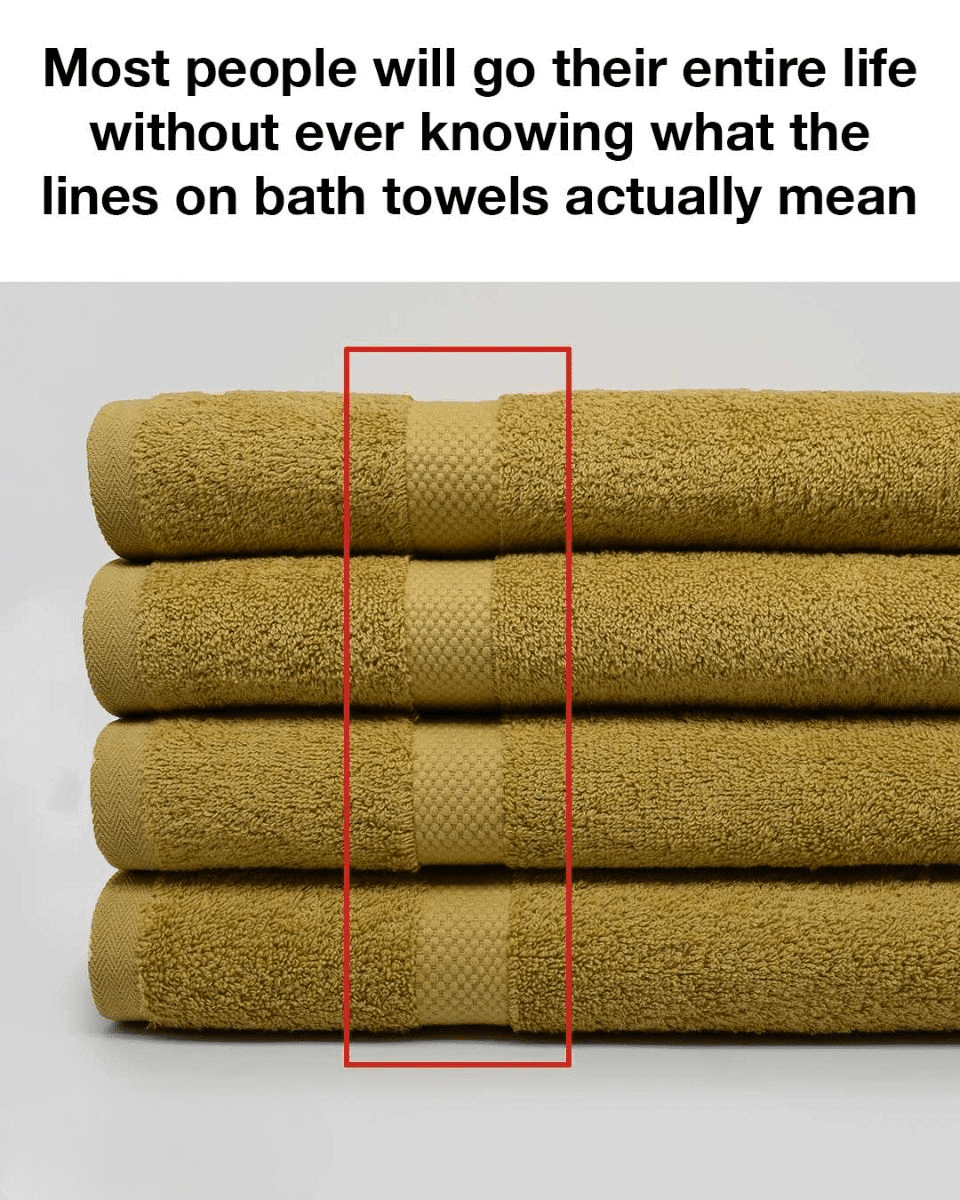Bath towels are a common item found in virtually every home, yet most people never stop to think about the subtle design features they contain. One often-overlooked element is the presence of lines or patterns woven into the fabric. While they may appear to be purely decorative, these lines serve important functions that enhance the towel’s performance and longevity. Gaining insight into what these lines represent can give you a new appreciation for the craftsmanship behind such an everyday item.
Why Bath Towels Have Lines: More Than Meets the Eye
Those lines woven into bath towels aren’t just for show. They often result from specific weaving techniques designed to improve various aspects of the towel’s performance. These include helping the towel absorb more moisture, reinforcing its structural strength, and even improving how it feels to the touch. Understanding these practical purposes reveals the amount of thought that goes into the manufacturing of what seems like a simple product.
Key Functions of Lines on Towels
A primary function of these lines is to boost absorbency. Towels that feature textured or patterned lines usually have an increased surface area, allowing them to soak up water more efficiently. These lines can also promote faster drying by creating small channels that help air circulate more easily through the fabric. Beyond their performance benefits, these lines may act as visual guides that make folding and hanging neater, helping the towel retain its shape and look.
The Importance of Tread Lines in Durability
Some towels include raised, textured lines known as tread lines. These aren’t just for grip or feel—they help reinforce the towel’s structure. Tread lines are created through specialized weaving that makes the towel more resilient to wear and tear. They help preserve the fabric’s thickness and prevent fraying over time, especially after multiple wash cycles. In essence, they contribute significantly to how long your towel stays soft, thick, and intact.
How the Dobby Weave Adds Structure
Many of the lines seen on towels come from a weaving method called the dobby weave. This technique uses small, repeated geometric patterns to produce a tighter and more stable fabric. The dobby weave strengthens the towel, helping it resist stretching or warping even after frequent use. This structural consistency ensures that your towel maintains its shape and function over time.
Dobby Borders: Decorative Yet Practical
You’ve probably noticed the thick, decorative bands often found near the edges of towels—these are called dobby borders. Though they contribute to the towel’s visual appeal, they also serve a practical role. These borders are tightly woven to reinforce the ends of the towel, preventing unraveling and adding overall durability. They function like a frame, protecting the towel’s core and prolonging its lifespan.
Final Thoughts: Not Just a Simple Towel
What may seem like a minor detail—the lines on a towel—actually plays a key role in its functionality. From enhancing water absorption to strengthening the towel’s structure, these woven features are the result of thoughtful design. Understanding their purpose allows us to appreciate the engineering behind a product we use every day without a second thought. Next time you dry off, take a closer look at your towel—you might notice just how much design is woven into each thread.
